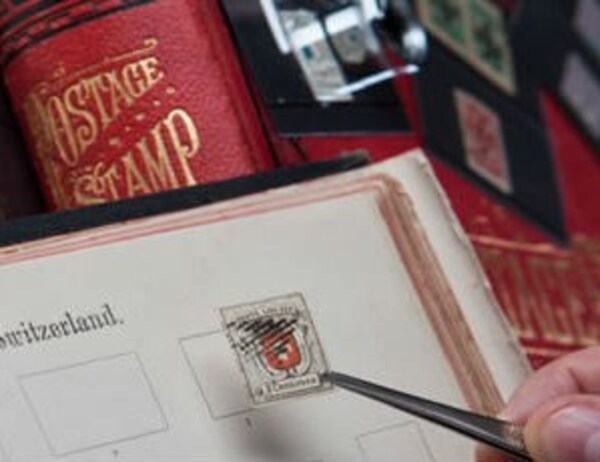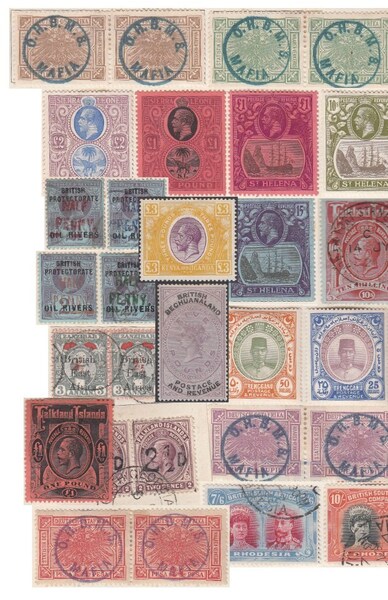Occasionally I talk to groups of non- collectors about our hobby and my business. It does pay to keep the audience in mind when I’m making my preparations but I’m always caught out by something.
On one occasion I gave a talk to members of a well- known High IQ society, I decided it should be quite technical in nature. I began my talk by unveiling a picture of a Penny Black, rather like the magnificent unused example we currently have on our front cover. I’d had the stamp blown- up to poster dimensions, it was over a square metre in size and to break the ice I launched into a joke. “This is a Penny Black” I began “you can identify it because it’s black and has the words “One Penny” on it”
Silence.
Undaunted I decided the crowd simply needed more of the same.
“As you can see,” I placed one open hand at the bottom of the giant picture and stretched upwards indicating the top of the design “… it was a failure because they made them much too big to fit on the letters!”
Silence again. I was in real trouble.
“A joke” I feebly informed the room.
It improved after that, the Penny Black is a brilliant historical subject, perhaps its greatest achievement in design terms is that even 177 years on, with almost nothing else in our world left unimproved, it is still quite clearly a postage stamp. They got it right first time.
I left with my pride intact after taking questions which were all about printing techniques and how valuations are calculated. These brainy folk had been listening carefully, clearly too carefully to laugh at my jokes. I’ve also spoken to a couple of Women’s Institute groups. My first was just after Prime Minister Tony Blair, one of our most capable political orators, had received a very slow hand clap from the W.I. at their Annual Gathering at the Royal Albert Hall in London.
Imagine, that vast place filled with ladies treating you to a slow hand clap! For self-preservation purposes I played to their maternal nature and talked about how as a young boy I had lost myself in the hobby which had given me my first job. I then described the somewhat Dickensian experience of being a stamp trainee back in the late 1970’s, certainly compared to modern employment custom and practice it was shocking, but in the way of many people in middle- age I can look back and find many positives.
I felt I’d won the room over, but during the final Q&A session a rather elegant lady politely raised a hand “Mr Green, are you here in case a late husband or two has left a collection behind?” … and she looked so sweet too!
“Actually my mother is sat behind you, she suggested I come along and speak”
She smiled sweetly amid the laughter and unlike our Prime Minister I had survived my first brush with the Women’s Institute.
Incidentally my second W.I. talk went well but the dreaded Q&A once again included a grenade thrown by one of these unlikely assassins, but this time my Mum wasn’t there to help.
“Mr Green. Do you make lots of money?”
She was a very small lady and had spent the previous 40 minutes bent forward, leaning on a walking stick, I’d thought she was asleep. She possessed a very strong voice, and a commanding tone.
There was an embarrassing silence but also many wry amused expressions, she was clearly well known for saying what she thought or perhaps for just asking awkward questions to see what might happen.
“Ah, you must be the lady with the beautiful single granddaughter looking for an older chap to marry”
“No I’m not!”
“In that case, I’m not telling you!”
I’ve given up with the W.I., much too stressful.
Business groups have also been interesting, that’s where I really appreciate what a strange world us stamp firms inhabit.
Pretty much every business person I spoke with during and after these talks assumed stamps could be measured and analysed just like any other product, like stock in a supermarket which could be ordered by the pallet, crate or metric ton. There would be surprise that every time we handled a stamp or a collection it required a person to individually assess and describe using free prose, then that work could almost never be duplicated and reused. Beyond relatively straight sets and modern material almost every stamp is different, every collection unique.
These business types often assume that once a winning formula is found you simply ‘go larger’ by manufacturing more, picking up the telephone to a wholesaler, by getting more staff & office space or whatever ‘normal’ businesses might do. That’s not us, quality of work is everything, and we worry about shades, condition, forgeries, gum, and attractiveness. Three guys can spend 20 minutes arguing about a single stamp. Have we painted a balanced picture with our words? What pages should we scan? Which catalogue do our clients use for reference? Every time we add a book to our library we need to find out what’s in it and brief every philatelist about it… the list goes on. We sell what comes our way, we don’t make it. It’s great.
What also comes across is the difference in how we relate to our clients. It’s a different world to offering a service or selling some standard product. As collectors we buy what suits our tastes, it’s our hobby and we want to deal with nice people who understand that. Every letter and email is different, every phone conversation unique. I’ve always loved it. Dealing with stamp collectors who are almost to a man and woman thoughtful and intelligent has been my life and when I talk to those rooms of business people I can tell that they’ve never experienced anything like it.
After my last talk we were offered a lovely collection of GB stamps, a portfolio sold to one of the men present. He’d bought it almost 40 years before and we sold it through our auctions. A nice chap who had run a large company, but this Captain of Industry proved to be much less intimidating than the W.I.
Vincent Green #VinceGreenStamp


 General
General
 General
General
 General
General